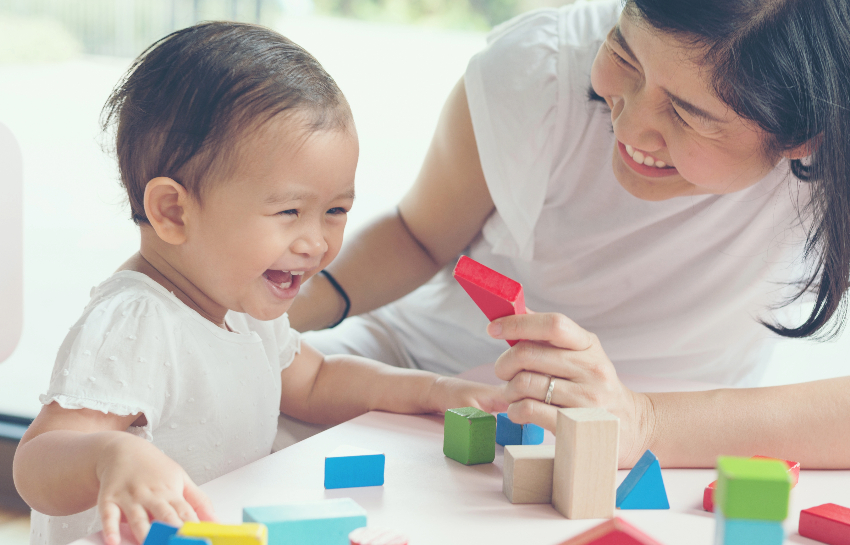Serve and Return: How to Support Infant Brain Development

During your child’s earliest years, every interaction becomes a building block for their cognitive and social-emotional development. It’s important to engage with your baby in a way that builds connections and supports their cognitive growth. A great way to do so is through serve and return interactions.
What is Serve and Return?
Imagine a game of tennis, ping pong, or pickleball. One player serves the ball, and the other returns the ball. This is called “serve and return.” Many experts also call the back-and-forth interactions between a baby and their caregiver “serve and return”. According to researchers, these interactions are essential for infant brain development. They shape the structure of the baby’s brain in ways that build communication and social skills.
Serve and Return Interaction Examples
Everyday routines are full of ways to serve and return! Here are five tips on how you can practice serve and return interactions with your baby.
1. Share the Focus
When you see that your child is curious or interested in something, it means that they are “serving.” Respond or “return” by bringing the item closer to them, talking about the item, or joining in their excitement.
2. Support and Encourage
If you notice your child showing interest in something, return the interest. Use words like “thank you,” “wow” or “I like that, too,” or show excitement on your face. Your attention helps your child know that they are being heard and understood.
3. Name it
If your child shows interest in a person, item, feeling, or action, name it. Naming things builds your child’s ability to use words and to understand the world around them. If your child points to an apple, you might say, “That apple sure looks yummy!”
4. Take Turns
Show your child how to take turns back and forth in both playing and talking. If your child rolls a ball to you, pause. Then roll it back. If you ask your child a question, pause and wait for the answer. When they serve again, return again. Taking turns teaches your child self-control and how to get along with others.
5. Practice Endings and Beginnings
When you notice that your child is finished with one toy or activity and moves to another, follow their lead. Allowing your child to end and start activities supports them in exploring their world.
Babies and children are naturally curious and eager to learn about the world around them. Watch closely and you will start to notice the different ways your baby tries to attract your attention through “serving”. Return their serve and you will help their brains grow and develop while enjoying fun, playful moments together.
To learn more about child development and how to encourage a child’s progress at different ages, visit helpmegrowmn.org.
Portions of this content, developed by Help Me Grow Minnesota, may have previously appeared elsewhere.

New Horizon Academy is a nationally accredited early learning provider with over 90 schools in Minnesota, Colorado, Iowa, Idaho, and Kansas. Through play-based curriculum and high-quality daycare, New Horizon Academy schools nurture and prepare children to succeed in school and in life.
Schedule a tour to learn more about our highly trained daycare teachers, safe and secure facilities, and commitment to providing the highest quality care for infants, toddlers, preschoolers, and school-age children. Contact a New Horizon Academy childcare center near you today!


